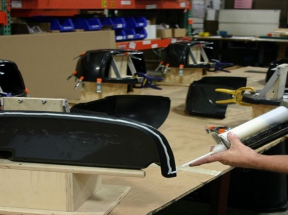When it comes to bonding materials, the world of plastics poses a unique set of challenges. Among the trickiest to glue are polypropylene and polyethylene, two commonly used thermoplastics. Despite their widespread applications in various industries, these materials exhibit properties that make them resistant to traditional bonding methods.
One of the primary reasons behind the difficulty in gluing polypropylene and polyethylene lies in their molecular structure. Both polymers are characterized by long chains of carbon atoms, forming a strong and dense structure. This molecular arrangement results in a low surface energy, making it challenging for adhesives to form a strong bond.
Furthermore, polypropylene and polyethylene are known for their non-polar nature. Unlike materials with polar surfaces that readily accept adhesives, these plastics repel most glues due to their low surface energy and lack of reactive sites. This makes achieving a robust bond akin to trying to glue together two pieces of Teflon.
The non-polar nature of polypropylene and polyethylene also hinders the effectiveness of many common adhesives. Water-based glues, for instance, struggle to adhere to these plastics because of the inherent repulsion between the non-polar surfaces and the polar water molecules.
In addition to their molecular characteristics, the low melting points of polypropylene and polyethylene present another challenge. These plastics have relatively low heat resistance, which limits the use of high-temperature adhesives. Melting during the bonding process can compromise the integrity of the joint, leading to a weaker bond.
While gluing polypropylene and polyethylene may be a challenge, it’s not an insurmountable one. Specialized adhesives, such as those based on cyanoacrylate or polyurethane, are designed to address these challenges. Surface preparation techniques, such as flame or plasma treatment, can also be employed to enhance the adhesion of these notoriously difficult-to-bond plastics.
In conclusion, the resistance of polypropylene and polyethylene to traditional gluing methods is rooted in their molecular structure and low surface energy. Despite these challenges, innovative solutions and specialized adhesives continue to push the boundaries of what’s possible in bonding these versatile plastics.

